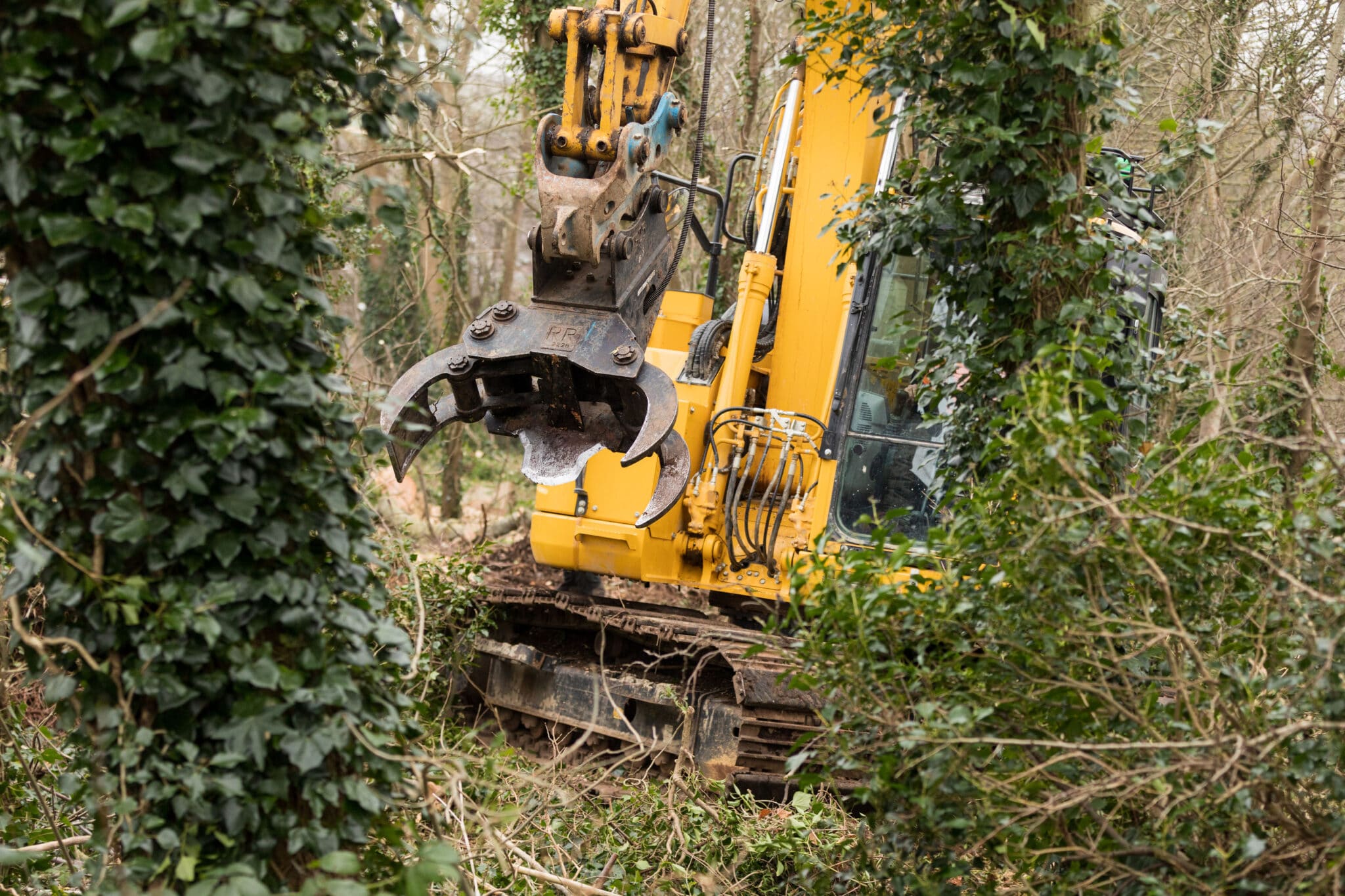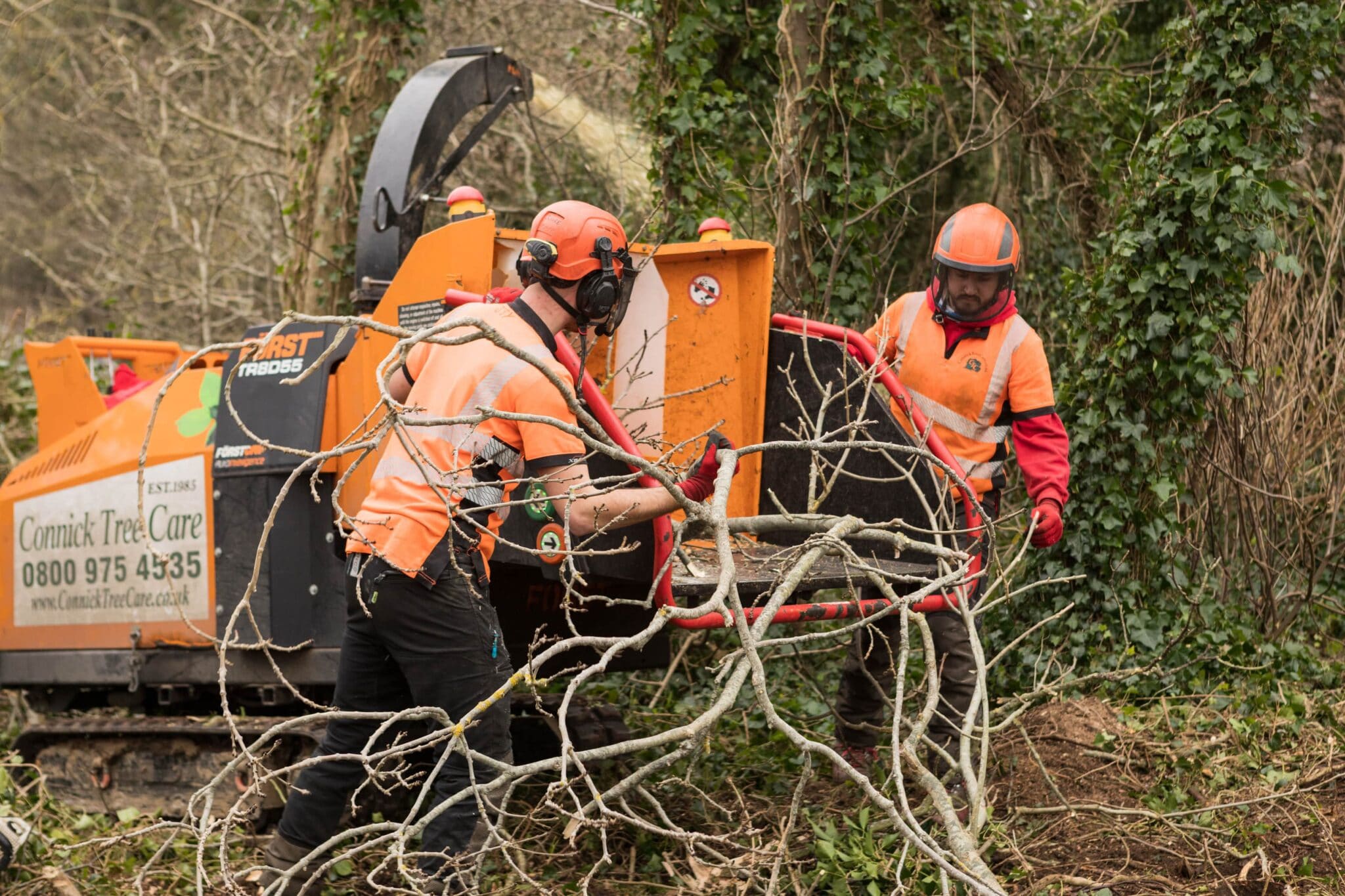A clearance of ash trees leads to a significant discovery, which requires special attention
The conservation of our wildlife, both plant and animal, is very important to us at Connick Tree Care. One animal that we sometimes come across is the badger, as in this case in Brighton. Badgers and their setts are protected by law, which means that when they happen to be living on the site of necessary tree work, special measures are required.
Background
Brighton and Hove City Council (BHCC) asked us to view some dead and dying ash trees in Abinger Wood, Brighton, and schedule their removal. The trees were close to a number of dwellings, as well as major and minor highways and equestrian paddocks, so were presenting a danger to the public.
Process
When we surveyed the site we identified a badger sett within the work zone. Referring to guidance from Natural England, we designed a methodology for carrying out the work while preserving the welfare of the badgers and their habitat. Our methodology was discussed and agreed with all relevant parties, including the RSPCA.
Next we carried out a detailed assessment of the site to establish the extremities of the sett entry holes. We then marked out an exclusion zone over 20m out from these points and notified local residents and members of the public with mail drops and signs explaining our process and works.
Before any tree work began, our team were thoroughly briefed to ensure they had a full understanding of the badger sett and all the necessary safety requirements. Work began carefully, with representatives from the RSPCA visiting the site during operations to check we were carrying out our work according to the guidance.

The felling machine moves in
We used mechanical felling machine only in certain areas where it would not cause damage to the sett, making full use of the length of the boom to carefully remove trees from cordoned off areas. The remainder of the work was completed manually and excess heavy timber was removed from site, in order to achieve more exposed ground for regeneration.

Outcome
The work for BHCC was completed on time, with no damage caused to the badgers and minimal impact on young growth in the zone, meaning their habitat can be quickly reestablished. This natural regeneration will take place along with some scheduled planting, reinstating the site to a totally covered canopy within the next few years.
The RSPCA were very pleased with our methodology and precautions and as the dead ash trees were cleared, we were able to create some new habitat zones for the badgers. Our team also worked with the neighbouring pony sanctuary to create some bunding using felled logs to help keep the ponies in, because much of the fence line had been exposed by the tree clearance.

Testimonial
“I’ve got rescue ponies and had some wild foals that had been dumped in my paddock as well.
It was rather shocking to see the trees taken down but Connick were as helpful as could be.
They kept in touch with me to say when they would be working and were very considerate when felling to make sure I was around to look after the foals.
I asked them to put some of the logs round the field to support the fencing so my ponies can’t get out and they were very obliging.
They offered to give me some wood chip for my field as well, which was very welcome.”
Lynn Satinet, The Sanctuary
Our Accreditations









